 |
|
| Issue #134 • March/April, 2012 |
Knowing that frugality is one of the cornerstones of rural living, Editor Annie Tuttle suggested that I tackle the topic of buying an adequate gun (and ammo, and accessories) with a $500 price limit.
It depends, of course, on what kind of firearm you’ll need.
New or used
Buying a gun is a little like buying a car. If you buy it “pre-owned,” you can get a higher quality model with more features on it than if you buy a brand-new lower quality model (with fewer desirable features) for the same amount of money.
A new driver who doesn’t know a thing about automobiles can wind up getting taken for a ride at a used car lot, in a way that goes beyond the test drive. So, what would you or I advise that first-time buyer of a second-hand car to do? Why, reach out to a friend who does know that sort of thing intimately!
The best approach is to see if that friend can actually go with you to check out the vehicle you’re thinking of buying. If he or she can’t do that, the next best thing is for them to give you a check list of what to look for to make sure the vehicle is going to be suitable for you, and not defective or in need of major repair.
This is exactly what the new shooter/inexperienced gun owner needs to do with a gun-savvy friend! The best thing is for the friend to come with the newbie to examine the used firearm in question. He or she will be able to tell right there if it fits the intended user’s hand and body properly. They’ll also know what to look for to make sure the sear isn’t too worn, and that there isn’t any unnoticed rust in the barrel, inside the magazine, or hidden in other nooks and crannies.
And, if that can’t happen, they can at least tell you what to look for … and what to look out for. Some rules of thumb aren’t always reliable. You’ll hear, “If it’s scratched and worn-looking on the outside, stay away from it: if the previous owner was that abusive to it, the gun is probably an unsafe wreck inside, too.” Ya know, I haven’t found that to be necessarily true.
About 15 years ago, I was meandering through Jack First’s Gun Shop in Rapid City, South Dakota, when my eye fell on a sad, gray-looking Smith & Wesson revolver in the voluminous used gun case. It was a Model 15, which the maker dubbed “the .38 Special Combat Masterpiece.” Now, the late gun guru Jeff Cooper was the high priest of the powerful .45 caliber pistol, and considered “.38 caliber Combat Masterpiece” a contradiction in terms, but the revolver in question was indeed a masterpiece of design efficiency and quality of workmanship. I asked to see it.
The finish had been worn almost completely away, and on the right side, the once-handsome checkering on the walnut stock had been flattened down. There were scratches all over the revolver. But internal examination showed that the chambers and the bore were bright and perfectly clean, and the action worked as slick and perfect as if it was the final exam gun of someone who graduated first-in-class from the Smith & Wesson Armorer’s School. Because it was so ugly on the outside, the price was an amazingly low $130. I laid the money down for it on the spot. After it was shipped to my local dealer and I took it to the range, I discovered that it would empty its cylinder into an inch at 25 yards with Federal Match 148 grain .38 Special target ammunition. I later won the Tri-State Regional Championship of the International Defensive Pistol Association, Stock Service Revolver division, with it.
The point is, the gun is not a book to necessarily be judged by its cover. Some of the people who take the best care of their guns do so because they use them heavily and they have to be in perfect working condition. This one had been traded in by a police department, obviously worn by an officer who carried it a lot but shot it little, and took meticulous care of the parts that counted: the parts that affected how it worked, not the parts that determined how it looked. But since, with used guns as with used cars, external appearance has a great effect on price, some of the best deals are second-hand firearms that look “rode hard an’ put up wet” on the outside, but work perfectly on the inside and have lots of useful life remaining.
If you’re new in town and don’t have that knowledge yourself, or have a friend who possesses it, ask around among other friends who’ve been there a while. Word of mouth will have taught them who the most reliable local folks are: the best vet, the best plumber … and the best gun dealer. That’s the guy to go to if purchasing a used firearm is your plan.
If none of that is possible, just buy a less expensive gun brand new. At least it will be covered by warranty.
|
Shotgun
In a farmhouse that only contains one firearm, I’ve found it will more likely be a shotgun than anything else. The Pilgrims came off the Mayflower with “smoothbores” (the Pioneers carried them West in their Conestoga wagons) and farmers today use them for everything from gathering winter venison and wildfowl to protecting the chicken coop from predators.
Single-shot guns like the NEF (New England Firearms) are a traditional economy choice. Trouble is, whether you’re hunting and two birds rise in front of you, or two feral dogs have gotten in among the sheep, or the door is being kicked down by more than one home invader, a single-shot gun is not terribly comforting.
Low-priced double barrel shotguns are available within Annie’s price specification which are also within the bounds of acceptable quality. The Stoeger Coach Gun is the one with which I’m most familiar, and which I most trust. I would get it in the “hammerless” version. The ones with the 19th-century-style, dog-ear hammers on the outside look at home in a Wyatt Earp movie, but are slow to cock, and extremely awkward to un-cock if you don’t have to fire, particularly with shaky hands after a moment of excitement. The sliding tang thumb safety found on the hammerless version is much easier and faster to operate.
One advantage to the double barrel is that it’s very easy and safe to open its breech for checking, loading, and unloading. That makes a novice understandably comfortable with it. The forward trigger fires one of the two barrels, the rear trigger the other, so the user can load a close-range birdshot round in one barrel and a single massive slug or a heavy buckshot load in the other, thus preparing for a broad range of contingencies.
However, there’s still that small matter of only having two shots before you have to reload. Whether involving meat on the hoof or wing, dangerous wild animals, or feral human criminals, stress situations are not conducive to perfect marksmanship. Your writer is among the number who, taking that into account, would rather have a repeating shotgun that can hold more rounds in its magazine.
Bolt action shotguns are, in my opinion, too clunky to operate with effective speed. They’re cheap, but they are so for a reason. They also seem to have stock designs that make them kick like the proverbial mule.
Semiautomatic shotguns are easier to manipulate from shot to shot than slide actions, and the gas-operated ones kick less, since their mechanism bleeds off a lot of force before it reaches the shooter’s shoulder. However, in this day and age, you’re going to have to look long and hard to find a new semiautomatic shotgun for under five bills. Haunting the used shotgun racks at the gun shop will be your best bet there.
Pump guns, however, can still be had in high quality, brand new, for well under that figure. The slide action requires a good bit of practice to operate reflexively to take advantage of its strong potential speed of fire. Practice doesn’t cost you anything, though, and running a pump gun’s slide is something that can be practiced in dry fire with zero expenditure for ammunition.
There are some cheap Chinese clones of old, popular American pump guns: homages to the Winchester 1897 and the Ithaca Model 37. Some of the “Chin-chesters” have worked well for their owners, and according to scuttlebutt, some haven’t. The one Chinese clone of the Ithaca I tried literally fell apart in short order: no bargain at all. A couple of years ago, I noticed that one type of these Model 37 clones marked “made in China” was being imported by Savage Arms. Savage is a reputable company and stands behind their brand, but I haven’t tried of their Model 37 clones and therefore can’t speak from personal experience about that particular model.
What I do have decades of experience with are the Remington Model 870 and Mossberg Model 500 pump guns. I’ve owned and used several of each, and have had hundreds of each come through my classes. As manufactured today, these are good, solid working guns.
The 500 Mossberg was originally engineered to be an economy-priced gun, and it also has good ergonomics in its controls. The Mossberg has no loading gate between the fingers and the mouth of the magazine to cause fumbling in either loading or unloading. The manual safety is a sliding lever on the tang, operated by the thumb, as on most “hammerless” double barrel shotguns. This is ambidextrous, and is very quick and natural for either hand.
The economy version of the Remington is the Model 870 Express. The wood of both butt-stock and fore-end are more functional than fancy (try for black synthetic instead), and the metal is finished in a flat gray instead of the usual, handsomely-polished Remington blue. The guts of the gun are pretty much the same. The manual safety is a cross-bolt button at the rear of the trigger guard, set up for the right-handed shooter but reversible for a southpaw.
Often found on the shelf at prices within a few dollars of the other, both the Remington 870 Express and the Mossberg 500 are hugely popular “best buy” shotguns. Both guns are proven to be extremely reliable, and choice may come down to personal preference and habituation. In a 12-gauge pump, I’m likely to choose one of my several 870s: their actions work a little smoother for me. In a 20-gauge, I’ll go with the Mossberg 500: I’ve seen the occasional 20-gauge Remington pump jam with a shell between lifter and bolt, and that doesn’t seem to happen with the Mossberg. Diligent shopping should reward you with a new 500 or 870 Express for $400 or less.
|
High powered rifles
Choice depends on what you’re hunting. Bigger, more powerful animals need bigger, more powerful guns and loads. The bolt action Savage 111 is available in the most popular big game hunting calibers for under $500 with factory-supplied 3-to-9X variable power telescopic sight, an accessory you’ll want to take advantage of its potential at distance. Ditto the Mossberg ATT and the Remington 770, both budget-grade bolt guns which have earned good comments when shot by testers I respect. I was even able to find the famous Remington Model 700 in its low-priced SPS variation, complete with Remington-branded scope, for under $500.
In an autoloading military style rifle, low-end but reliable AR15s like the Del-Ton start at around $700, and won’t be easy to find for five bills even on the used gun rack. AK47 clones are starting around $500 new, and easier to find within the price range Annie specified in the used gun section of the gun shop. SKS rifles are cheaper, but beware; some will go off when dropped, and some of the more poorly assembled ones will “double” or fire two shots when the trigger is pulled once.
The WWII era Mosin-Nagant bolt action Russian army rifle seems like a bargain when offered at $100 or so, but be advised: it’s heavy, clunky to operate, kicks like hell, and its rimmed 7.62mm Russian ammunition is hard to find with soft-nose hunting bullets.
.22 rifles
The .22 is a great choice with which to learn marksmanship, since its ammo is so relatively inexpensive and its sound report and recoil are so mild. It’s the fun gun. It’ll also do nicely for squirrel, rabbit, woodchucks out to 100 yards or so (depending upon sights and marksmanship), and the coyote slinking behind the rabbit hutch. It’s not my idea of a home defense weapon, though it’s certainly better for that than a rolling pin.
I can recommend three reliable, accurate .22 rifles in the economy category: Marlin, Mossberg, and Ruger. Marlin’s Model 60 comes with tubular magazine, and the same company’s Model 795 is built around a quick-interchanging box magazine. Ruger’s 10-22, also box magazine fed, is another contender. All are semiautomatics, and all are hugely popular.
One advantage of the 10-22 and the 795 is that their quick-reloading capability makes them suitable for the wildly popular Appleseed training seminars, which include reloading under time constraints. Free for kids, ladies, and military personnel, these events do a splendid job of teaching both basic rifle marksmanship and American Revolutionary War history. Backwoods Home heartily endorses Appleseed, and so does this writer.
Another popular low-price choice is the Mossberg Plinker. This autoloading .22 is imported by Mossberg from Brazil. The ones I’ve seen have been accurate and reliable, and price is well under $200. My friend Steve Sager has thousands of rounds through his, with 100% reliability, and it shoots one-hole groups at 25 yards.
With a lot of the other firearms under discussion here, we’re going to get the gun and maybe a few boxes of ammo for our five C-notes. With any of these little .22s, those same five bills buy the rifle, several thousand rounds of ammunition, and a weekend at an Appleseed. In other words, the others make you a gun-owner, but this approach makes you a marksman for $500.
|
Handguns
For a quality .22 handgun, it’s tough to beat one of the polymer-frame Ruger 22/45 semiautomatic pistols. Within the limits of the shooter’s marksmanship skill, they’ll do darn near everything a good .22 rifle will do.
For a gun you might need to put down large, maddened livestock or a bear, .357 Magnum is the absolute minimum and .44 Magnum is better. For a gun you can trust, you’re definitely looking for a used revolver here. The rugged Ruger double action .357 and single action .44 can still be had, at the used gun counter, within the budget Annie has allotted us. The gun might have some finish wear, but Rugers are famous for their longevity. A double action .357 revolver by Ruger or any other quality maker is not a bad thing to have in your hand during a gunfight, either.
A semiautomatic pistol for concealed carry and home defense? In a new gun, I think your best bet by far is Smith & Wesson’s entry level pistol, the Sigma. I’d suggest getting it in 9mm; the money you’ll save on practice ammo is important if you don’t reload your own cartridges, and today’s high-tech hollow point 9mm rounds make that caliber a reasonably effective man-stopper. If you prefer bigger bullets, it’s also available — and was actually originally introduced — in caliber .40 Smith & Wesson. Trigger pull is heavy, but the guns themselves fit most hands well, and are light and reliable. Suggested retail is $350, and I see them routinely for $299-320 new in gun shops. A definite high value buy.
On the secondhand market, there are literally tons of traded-in police issue 9mm and .40 caliber pistols by Beretta and Smith & Wesson. Seen as obsolete by some, these well-made pistols will work as well for you as they did for decades in law enforcement. Careful shopping will find you one — who cares if it has some holster wear? — for around $400 or less, often with a spare magazine or two.
Final advice
There are lots of good guns at good prices, and I can’t cover them all in a 3000 word article. If your favorite, or your advisor’s favorite, is not here, it doesn’t necessarily mean I think that gun is crap. It might only mean that I didn’t have room to mention it.
In closing, remember that a $480 gun and a box of ammo may be a good investment, but a $250 used gun and $250 worth of ammo to practice with will make you a better shooter. And $500 spent on training will make you a better shooter with the gun you already have, than will $500 spent on a new gun.
There are still bargains to be had … and a dedicated shooter with a good, inexpensive gun will be an odds-on bet to outshoot a dilettante who doesn’t know what he’s doing with a firearm that costs thousands of dollars.


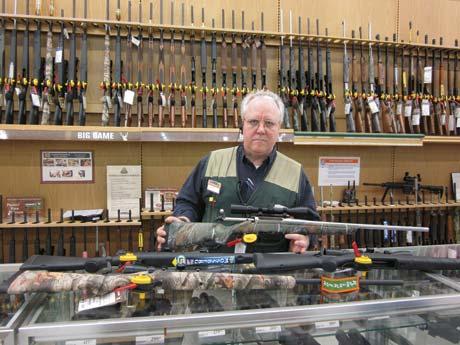



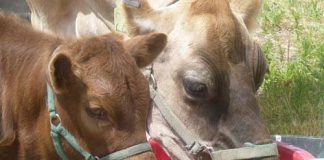
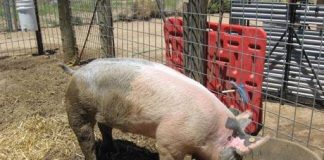





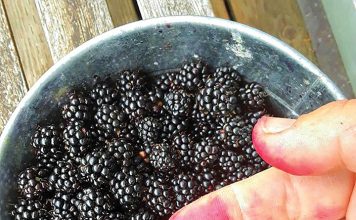


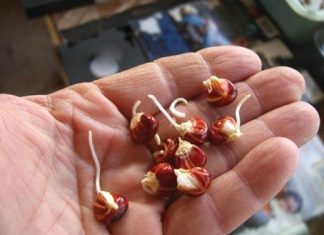

Since I bought my first SKS carbine in 1991 I have owned about seven of them. At present the wife and I own three, never have we had an SKS to discharge when dropped or if it fell. I do not like the safety on them, there might as well not even be one as it does nothing but block the trigger. However as long as a shooter keeps that in mind and observes the usual safety precautions there will be no problems.
I consider your statement to be reckless and irresponsible in that it could dissuade some potential first time buyers from owning a great carbine, that’s sad! The SKS is no more dangerous than any other firearm when handled by responsible, safety minded individuals. I have been a soldier and a cop for over 17 years, an avid sportsman/hunter, competition shooter and reloader so firearms have been an important part of my life since I was just a boy.